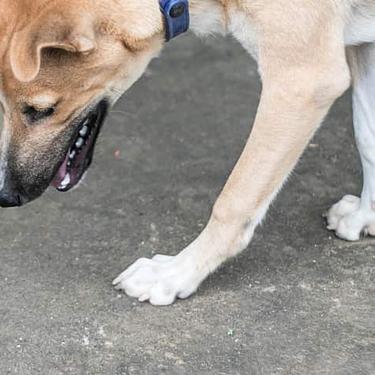
-
Find the right food for your petTake this quiz to see which food may be the best for your furry friend.Find the right food for your petTake this quiz to see which food may be the best for your furry friend.Featured products
 Hill's Science Diet Adult Oral Care Chicken, Brown Rice & Barley Recipe Dog Food
Hill's Science Diet Adult Oral Care Chicken, Brown Rice & Barley Recipe Dog FoodClinically proven kibble technology to reduce plaque & tartar build-up
Shop Now Adult Small & Mini Lamb Meal & Brown Rice Recipe Dog Food
Adult Small & Mini Lamb Meal & Brown Rice Recipe Dog FoodFor the faster metabolism of Small & Mini dogs
Shop Now Adult 7+ Small & Mini Chicken & Brown Rice Recipe Dog Food
Adult 7+ Small & Mini Chicken & Brown Rice Recipe Dog FoodFor the unique nutritional needs of mature Small & Mini dogs
Shop NowFeatured products Hill's Science Diet Adult Sensitive Stomach & Skin Dog Food
Hill's Science Diet Adult Sensitive Stomach & Skin Dog FoodHighly digestible recipe, gentle on stomachs. Nourishes skin & promotes a lustrous coat
Shop Now Adult Urinary Hairball Control Chicken & Rice Recipe Cat Food
Adult Urinary Hairball Control Chicken & Rice Recipe Cat FoodActively supports the health of the whole urinary system
Shop Now Adult Indoor Chicken Recipe Cat Food
Adult Indoor Chicken Recipe Cat FoodSupports energy level and beautiful fur in indoor cats
Shop Now -
Featured articles
 15 Pet-Friendly Cities Ideal for a US Road Trip
15 Pet-Friendly Cities Ideal for a US Road TripCheck out our list of pet-friendly U.S. cities that are excellent travel options, offering off-leash dog parks and pet-friendly restaurants & hotels.
Read More Easy DIY Dog & Cat Toys: Nine of Our Favorites
Easy DIY Dog & Cat Toys: Nine of Our FavoritesBrowse this comprehensive guide for several of our favorite DIY dog and cat toys that are sure to put a little pep in your pet's step.
Read More My Pet Ate a Lizard — What Should I Do?
My Pet Ate a Lizard — What Should I Do?Learn what to do if your pet eats a lizard, including whether they can be toxic and symptoms to keep an eye on when they've swallowed one.
Read More -


You've noticed your dog scratching more often but you didn't think much of it — that is, until today, when you noticed fleas on their belly as you were rubbing their favorite spot. Fleas on dogs may make you squirm, but fortunately for your pup and your household, flea treatment for dogs can help keep these pesky insects away.
What Are Fleas? How Long Do They Live?
Fleas are small, flightless insects that survive by feeding on the blood of their host, which in this case is your dog. According to Pest World, fleas will feed on any warm-blooded animal, including humans — though they prefer hairy animals, such as dogs, cats and rabbits.
According to Pet Basics, fleas can carry diseases and cause your dog various health issues, including flea allergy dermatitis, tapeworm, bartonellosis and anemia.
It's important to understand that a flea goes through four life stages: egg, larva, pupa and adult. So, though you may only see adult fleas on your dog's body, there are likely eggs elsewhere on their fur or in your house. The eggs will then cycle through the life stages, making flea extermination a potentially long process.
When Are Fleas a Problem?
Depending on where you live, fleas may either be a year-round concern or just a nuisance during the warmer months. The American Kennel Club has a helpful guide that you can use to determine your state's flea season. Just keep in mind that an earlier spring or longer fall means flea season will start earlier or end later. To be safe, many veterinarians suggest year-round prevention.
Your dog can get fleas almost anywhere. Dogs can bring them in from the outdoors, or get them from another animal. They can also enter your home through your own clothing, so be sure to do a thorough clothing wash if you find fleas in your home.
How to Prevent a Flea Infestation
It's always best to prevent a flea infestation rather than try to eliminate one. But that's somewhat easier said than done as it can be tough to guess the source of an infestation until you've already had one. The first step is to do a thorough vacuum of your home, paying particular attention to nooks and crannies and upholstered furniture. This can go a long way toward getting rid of eggs, larvae and pupae.
If your dog has had fleas before and you know it happened after a trip to a certain location, then be sure to bathe and comb them whenever they return home from that particular place. Use a fine-toothed comb and soapy water to drown the fleas.
Using a preventive flea treatment is also an option. Talk with your vet to decide if an oral or topical drug could be helpful for your dog.


Tasty Tips
How to Tell If Your Dog Has Fleas

One of the easiest ways to tell if your dog has fleas is by examining their body. However, because fleas are so small and camouflage themselves so well — especially in dogs with dark hair or fur — they can be hard to spot. One way to help guide your search is to put a belt around your dog's waist. Generally speaking, the most common places you'll find fleas hiding is behind that belt near their rump and tail base.
You'll also want to look for other signs, such as flea dirt, a brownish-black mixture of flea excrement and dried blood. You may also notice flea eggs, which are transparent or white minuscule sacs, though these may be even harder to see than the fleas themselves.
Don't just search for fleas on your dog's body. Any bedding or fabric they spend time on, such as pillows, blankets or carpet may have fleas, flea eggs or flea dirt on them.
Flea Treatments for Dogs: Medication Types & Talking to Your Vet
If you think your dog might have a flea problem, contact your vet as soon as possible to figure out what type of treatment to use. Different types of treatments include oral or topical medications, shampoos and medicated collars. Flea treatments and medications work in a couple different ways: some that will kill the flea on contact and some that work when the flea tries to bite. They both have their effective applications, so make sure to ask your vet which one is right for your dog. These treatments don't usually require a prescription, but the most effective ones will still require you to speak with your vet. Also, be sure to ask your vet about possible side effects and drug interactions if your dog is taking other medications.
While flea treatments will kill adult fleas and weaken larvae, remember that fleas have various life cycles, so a one-time treatment won't solve a flea infestation. You'll need to continue the treatment as long as your veterinarian instructs, but it is advised to continue year-round treatment to ensure that eggs don't have the chance to hatch (and that no adults lay eggs), and mitigate any other health risks. Fleas on dogs can be a huge headache to deal with, but by using flea treatment for dogs and careful grooming habits you can help avoid a more serious infestation.


Erin Ollila believes in the power of words and how a message can inform—and even transform—its intended audience. Her writing can be found all over the internet and in print, and includes interviews, ghostwriting, blog posts, and creative nonfiction. Erin is a geek for SEO and all things social media. She graduated from Fairfield University with an M.F.A. in Creative Writing. Reach out to her on Twitter @ReinventingErin or learn more about her at http://erinollila.com.
Related products

For the unique nutritional needs of mature Small & Mini dogs

For the faster metabolism of Small & Mini dogs

Clinically proven kibble technology to reduce plaque & tartar build-up

Improves everyday ability to get up & go
Related articles

Learn basic steps & precautions for treating a cut on your dog, including what you can put on the cut, and when you should take them to the vet.

Your dog's coat and skin are a big part of your dog's overall health. Ensure you keep your dog's coat healthy, by following these simple tips.

Discover how the field of dog science is giving us more and more insights into the inner workings of our furry best friends.

Understand the role that Omega-6 and Omega-3 fatty acids play in your dog's overall health, and how you can ensure they are getting enough.

Put your dog on a diet without them knowing
Our low calorie formula helps you control your dog's weight. It's packed with high-quality protein for building lean muscles, and made with purposeful ingredients for a flavorful, nutritious meal. Clinically proven antioxidants, Vitamin C+E, help promote a healthy immune system.
Put your dog on a diet without them knowing
Our low calorie formula helps you control your dog's weight. It's packed with high-quality protein for building lean muscles, and made with purposeful ingredients for a flavorful, nutritious meal. Clinically proven antioxidants, Vitamin C+E, help promote a healthy immune system.

